
"Observing the Webb Society Galaxies"
With volume-four of the Webb Society's Deep-Sky Observers Handbook, it lists a number of bright galaxies visible with small amateur telescopes.
There are a total of 270 galaxies listed in the Webb Society handbook.
Some are easy, a lot are difficult!
All coordinates from the book are for year 1950, so I didn't bother to list them.
It would be best to just search on the NGC# and find the latest coordinates.
I have 'sketched' or 'video-captured' all 270 objects from the list.
For detailed descriptions and additional sketches, see the Webb Society handbook, V4 "Galaxies".
Galaxies are large systems of stars and interstellar matter, typically containing from several million to several trillion stars.
They run in size from a few thousands to several 100,000 light years in size, and are separated from other galaxies by millions of light years.
They originate from large cosmic primordial clouds of gaseous matter (hydrogen and helium) in our Universe that slowly collapsed.
Most galaxies have formed at about the same time, within the first billion years after the universe started to expand, from an initial hot state.
Thus, they are all almost as old as the universe itself, currently thought to be about 15 - 20 billion years.
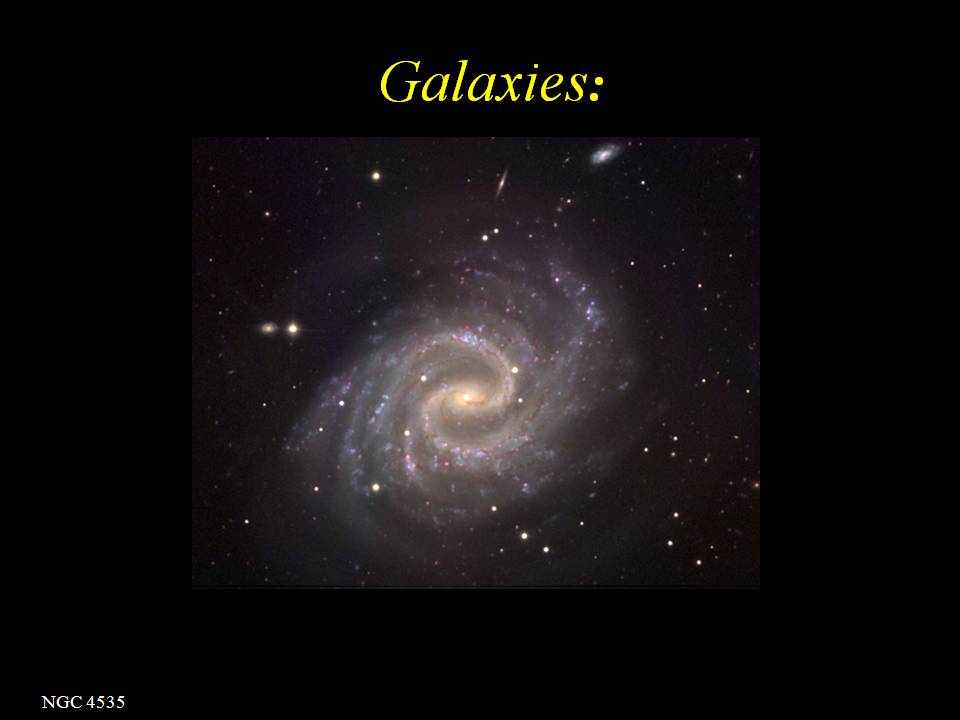
Galaxies are scattered throughout the visible universe, and are located outside our own galaxy.
We live inside a giant spiral galaxy, called the Milky-Way Galaxy. The Milky-Way is about 100,000 light years in diameter and contains a mass equal to about a trillion stars.
Our galaxy has several small dwarf galaxies orbiting around it that are only a few 100,000 light years distant. The nearest giant galactic neighbor, the Andromeda Galaxy, also a spiral, is about 2-3 million light years distant.
Some galaxies are isolated "island universes" which float lonely through an otherwise empty region of the universe. But the distribution of matter in the Universe is not uniform.
That causes groups of galaxies, running to few dozens of galaxies, or even large clusters of up to several thousands of galaxies, to form. The galaxies of these groups are in mutual gravitational interaction, which may have significant influence on their appearance.
Galaxies come in several types, and though of a wide variety of shapes and appearances,
have many basic common features. They are huge agglomerations of stars like our Sun,
From their appearance, galaxies are classified as spiral, lenticular, elliptical, and irregular.
All the main types have several sub-category classifications.
Spiral galaxies usually consist of two major components:
A flat, large disk which often contains interstellar matter visible as diffuse emission nebulae or as dark dust clouds, and young open star clusters, associations, and random stars that are often arranged in conspicuous and striking spiral patterns and / or bar structures.
The second feature is a central bulge core, consisting of older stellar populations with little interstellar matter, and often surrounded by a halo of older globular star clusters.
Lenticular galaxies are shaped like spiral galaxies without a spiral structure.
They are smooth disk galaxies, where stellar formation has stopped long ago, because the interstellar matter was used up. They consist of mostly older population stars only. From their appearance and stellar contents, they can often be observationally confused with the next type of galaxy – ellipticals.
Elliptical galaxies are shaped like giant luminous cosmic balls,
and have no spiral or disk components. They have little or no rotation as a whole.
Normally, elliptical galaxies contain very little or no interstellar matter, and consist of older population stars only.
Irregular galaxies have many different shapes and sizes due to distortion by the gravitational pull of their intergalactic neighbors.
These galaxies do not fit into the scheme of spirals, disks and ellipsoids, and exhibit no particular shape.
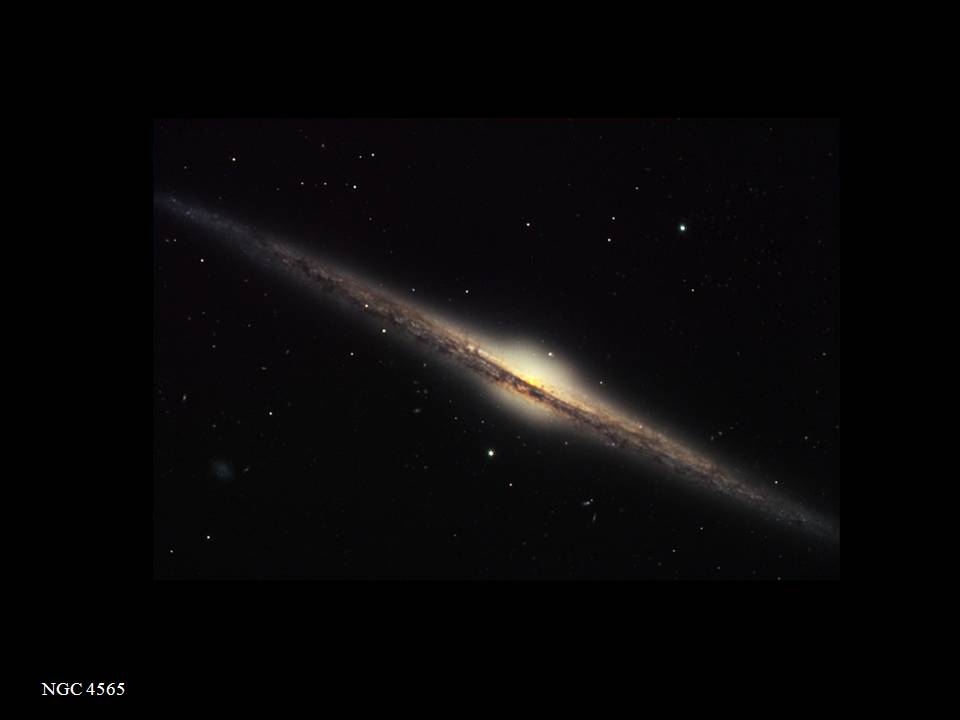
A few examples of Galaxies:
M31, the 'Andromeda Galaxy'
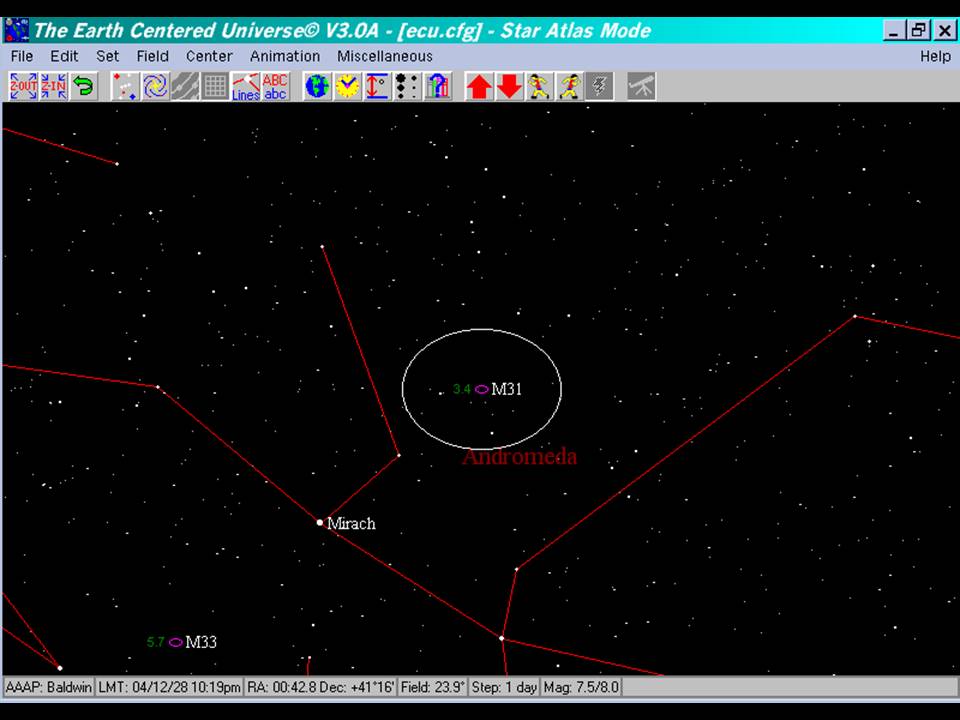
M31 is located in the fall constellation of Andromeda, 'The Princess’.
The famous Andromeda galaxy, our nearest large neighbor galaxy, visible to the naked eye.
It has a disk diameter of over 250,000 light years, and is about 2.9 million light years distant,
and more than double the size as our own Milky Way galaxy!
Discovered as early as 905 AD, and first resolved into stars about 1887.
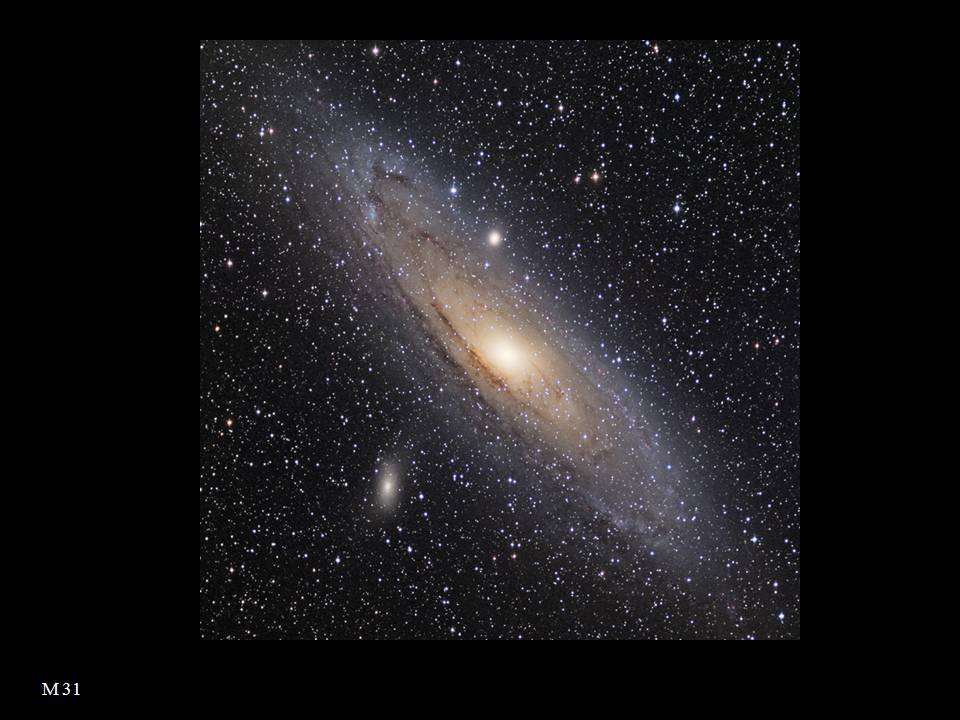
M51, the 'Whirlpool'
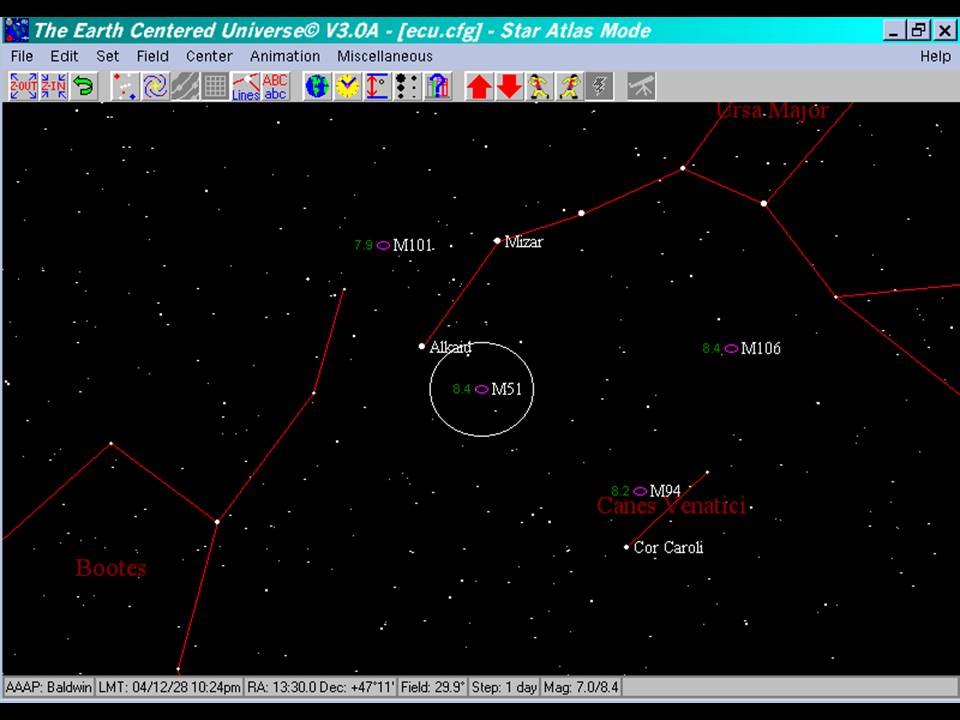
M51 is located in the summer constellation of Canes Venatici, 'The Hunting Dogs’.
The famous Whirlpool galaxy, M51 is easy to find and is a showpiece under dark skies.
It is about 37 million light years distant, and is currently encountering a smaller neighbor galaxy, NGC 5195, which is causing some distortions in the more massive galaxy.
Discovered in 1773.
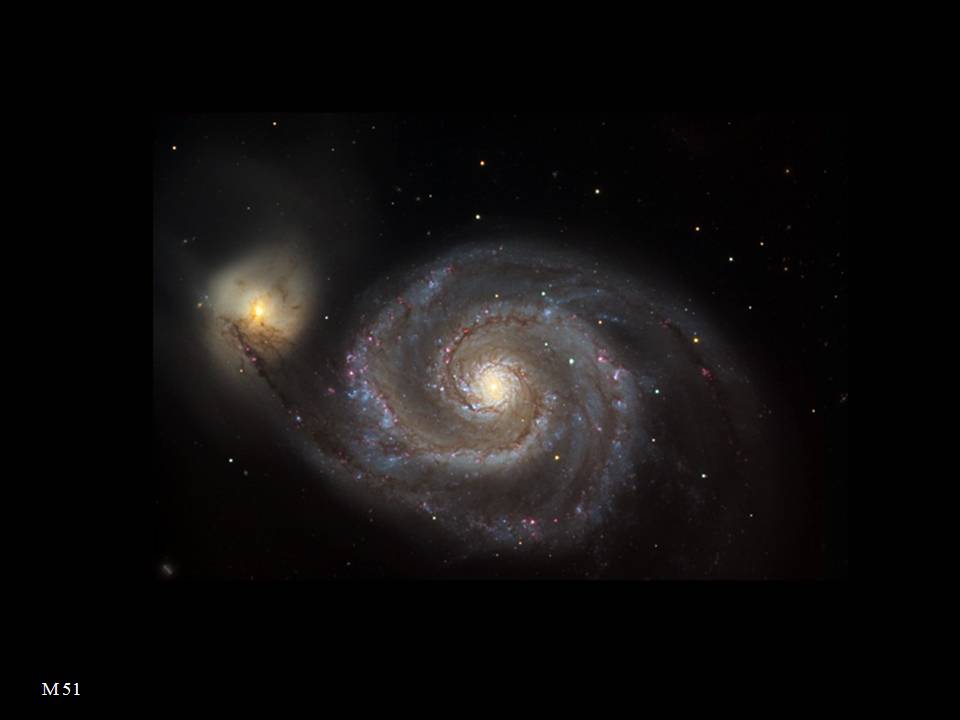
Photo Credits:
NGC4535 - Doug Matthews and EJ Jones/Adam Block/NOAO/AURA/NSF
NGC4565 - Bruce Hugo and Leslie Gaul/Adam Block/NOAO/AURA/NSF
M31 - Adam Block/NOAO/AURA/NSF
M51 - Jon and Bryan Rolfe/Adam Block/NOAO/AURA/NSF
Advanced Observing Program: National Optical Astronomy Observatory - Kitt Peak Az http://www.noao.edu/outreach/aop/observers/bestof.html
"Earth Centered Universe" by David Lane http://www.nova-astro.com/
Neat links:
Webb Society
Larry's home webportal
You may E-mail me at:
lsmch@comcast.net
This is it. Hope you enjoyed the visit. Come again soon!

